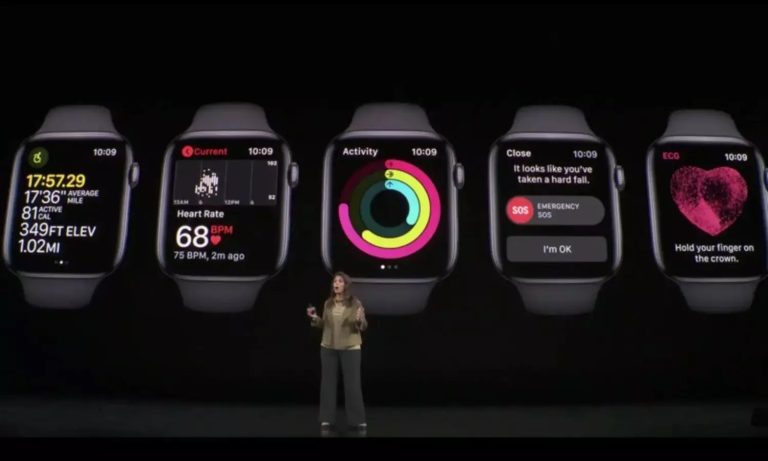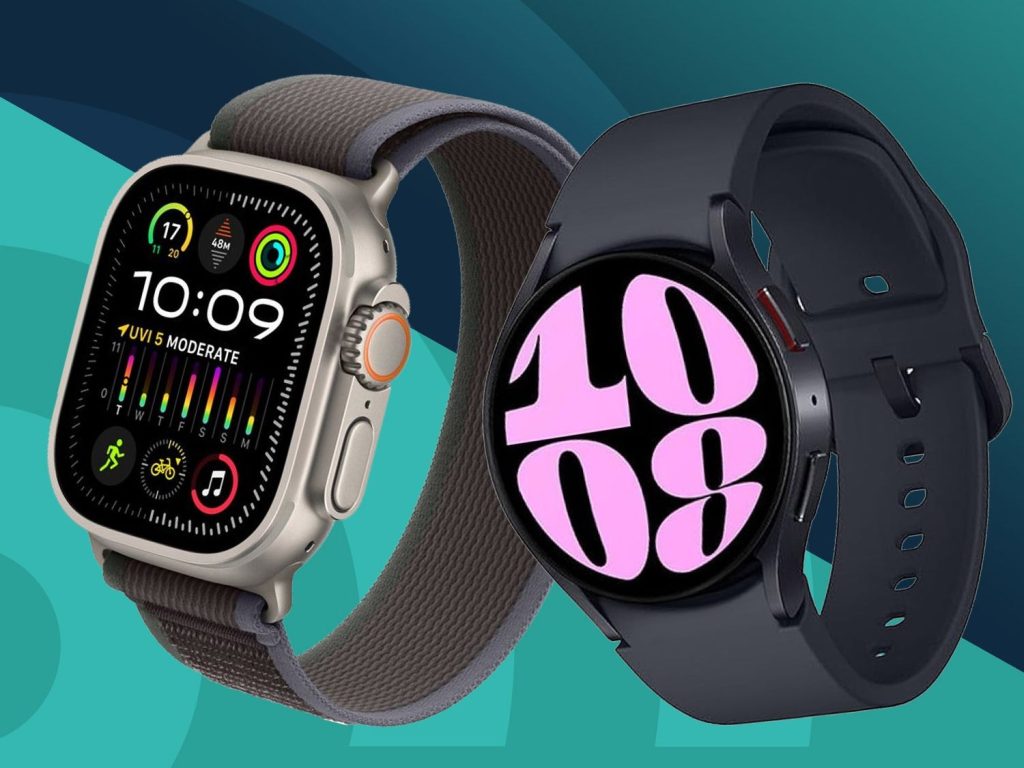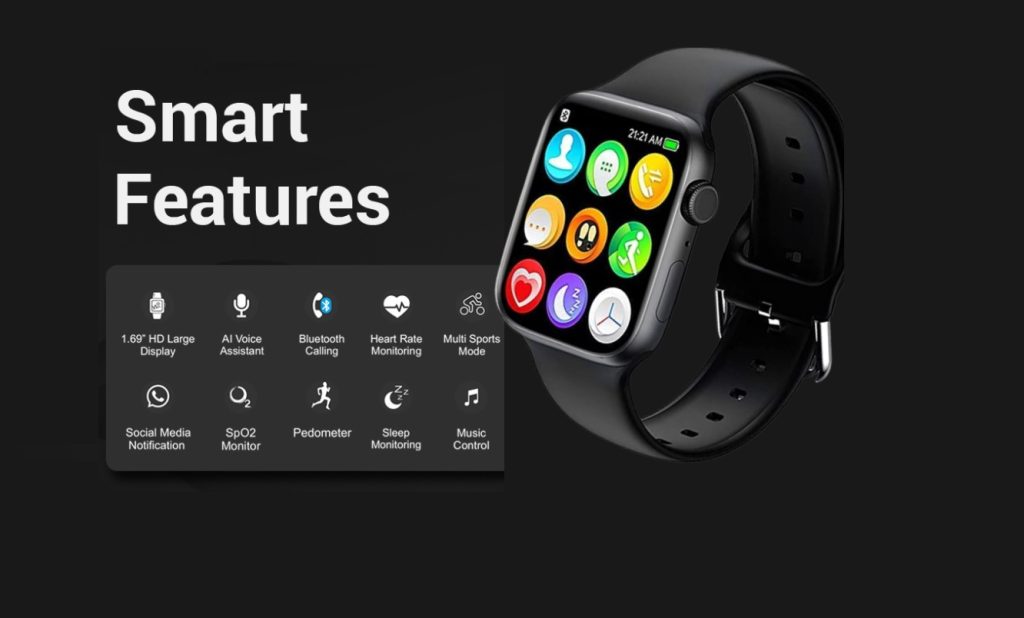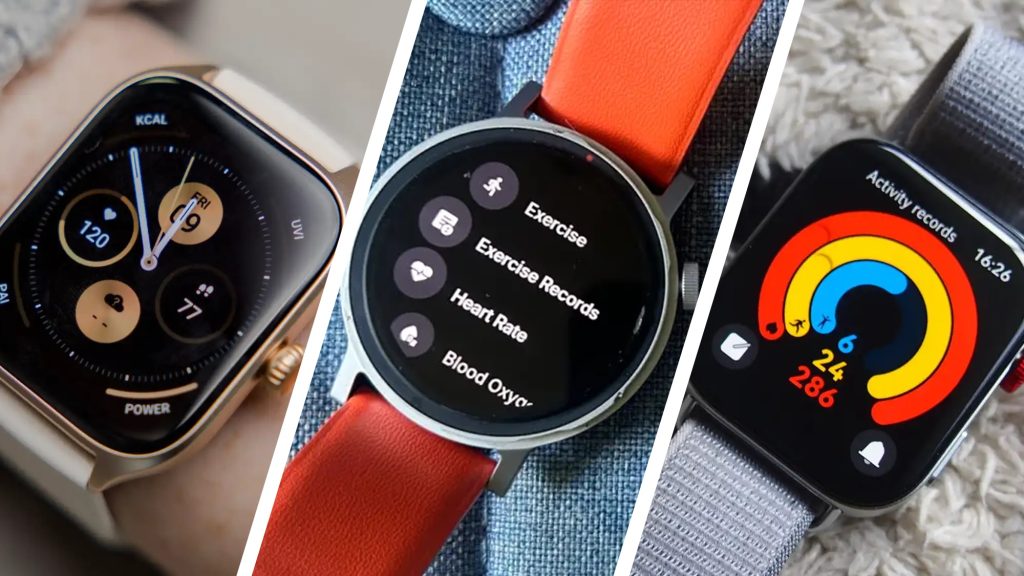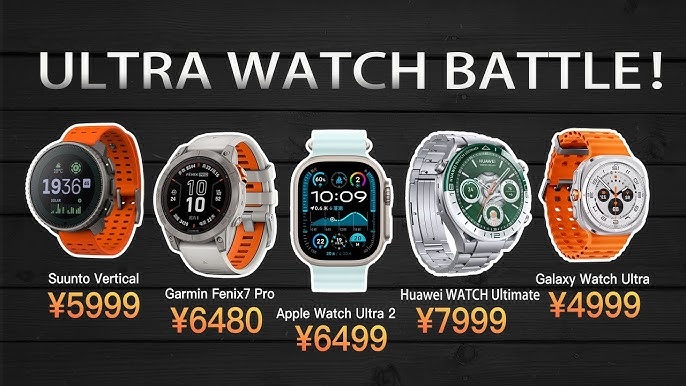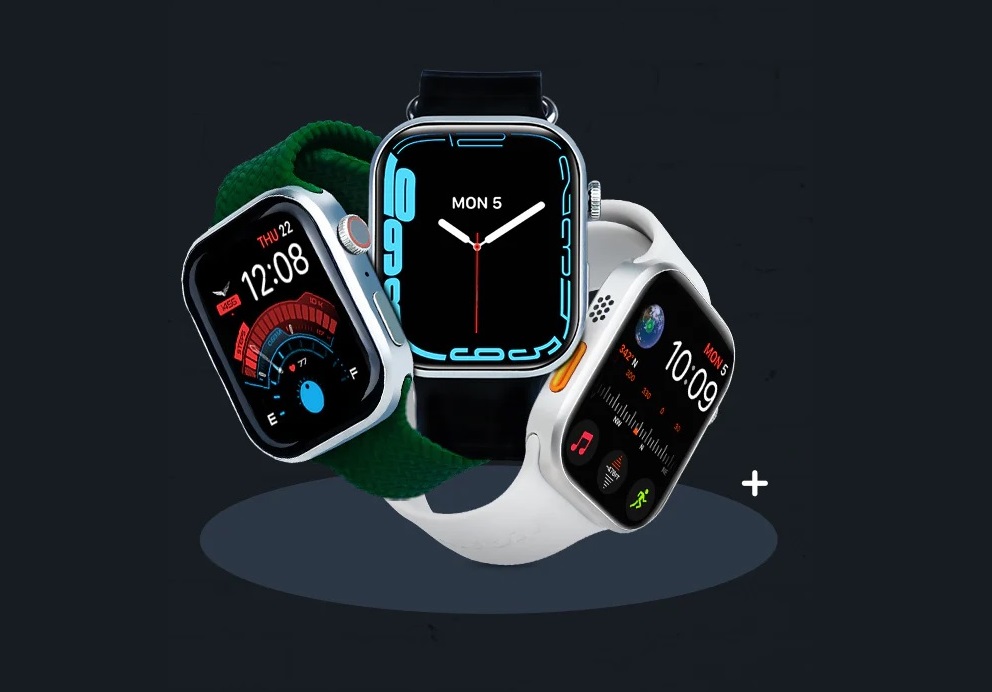Why everyone suddenly wants a smartwatch in 2025
Let’s be honest—10 years ago, if someone told you their watch could check their heart rate, count their steps, and pay for a burrito, you’d assume they were part of The Avengers. Fast forward to 2025, and smartwatches aren’t superhero gear anymore—they’re everyday essentials.
Here’s why everyone (yes, even your grandma) is strapping one on:
- Health obsession 2.0: Everyone’s tracking sleep, steps, and heart rate like their life depends on it. Spoiler: sometimes it actually does.
- Wallet-free living: NFC payments mean you can leave your bulky wallet at home. (Unless you’re still the “cash only” type—then good luck.)
- Notifications without the doom-scroll: Get texts, calls, and emails on your wrist without falling into the black hole of Instagram.
- Lifestyle glow-up: Music control, maps, AI coaching—you’ll look like James Bond but feel like…well, James Bond who still forgets leg day.
Bottom line? Your first smartwatch won’t just tell you the time. It’ll help you save time (and maybe even live longer).
Don’t buy blind: features you must check
Before you go impulse-shopping at 2 AM, let’s talk about features. Because nothing hurts more than realizing your shiny new smartwatch doesn’t actually work with your phone.
1. Compatibility (aka “Don’t buy an Apple Watch for your Android”)
Apple Watches only work with iPhones. Period. End of story. If you’re team Android, look at Samsung or Google. Otherwise, you’ll end up with a $400 paperweight.
2. Battery life (aka “Do you like charging… a lot?”)
- Apple & Google: 1–2 days.
- Samsung: 2–3 days.
- Fitbit & Garmin: 5–7 days.
If charging every night feels like adopting another pet, go for Fitbit or Garmin.
3. Health sensors (aka “Your wrist doctor”)
Look for heart rate, SpO2, sleep tracking, and stress monitoring. Premium watches add ECG and skin temperature. Trust me—beginners quickly get hooked on this stuff.
4. NFC payments (aka “Goodbye, wallet bulge”)
Once you tap your wrist to pay for coffee, you’ll never go back. Just make sure your bank supports it (UK users, check first—some banks still live in 2005).
5. Apps & ecosystem (aka “Who are your friends?”)
- Apple = endless apps.
- Google = growing fast.
- Samsung = solid middle ground.
- Fitbit & Garmin = fitness-focused, less app fun.
Budget-friendly smartwatches (under $200 / £150)
If you’re buying your first smartwatch, you probably don’t want to remortgage your house. Thankfully, budget options are better than ever in 2025.
- Fitbit Versa 4 (USA & UK): Simple, reliable, and perfect for fitness beginners. Long battery life means fewer nightly charging nightmares.
- Amazfit GTS 4 Mini (USA): Looks sleek, feels light, and doesn’t empty your bank account. Basically the IKEA of smartwatches—affordable but surprisingly stylish.
- Garmin Venu Sq (UK): If accuracy is your love language, Garmin’s your match. Great for runners who care more about performance than pretty watch faces.
- Samsung Galaxy Watch FE (UK): Samsung’s “Fan Edition” gives you flagship vibes at a budget price. Perfect for Android beginners.
👉 Translation: These are the best budget smartwatch under $200 USA and best smartwatch under £150 UK.
Premium smartwatches for the future-proof buyer
If you’re the type who thinks “entry-level” is a dirty word, here’s where your money should go:
- Apple Watch SE (2nd Gen): Affordable(ish) entry into the Apple world. Smooth, intuitive, and perfect for iPhone newbies.
- Apple Watch Series 9: The king of smartwatches. Gorgeous design, flawless integration, and enough features to keep you entertained while you ignore your gym membership.
- Samsung Galaxy Watch 7: Best for Android pros. Sleek, powerful, and loaded with health tools.
- Google Pixel Watch 2: Polished, beginner-friendly, and tight with Google apps. Think of it as your Gmail inbox… on your wrist.
Battle of the brands: Apple vs Samsung vs Fitbit vs Garmin
Choosing your first smartwatch brand is like picking your Hogwarts house—each has its vibe:
- Apple: Seamless for iPhone users, massive app store, beautiful design. Downside? Battery life shorter than a TikTok trend.
- Samsung: Best Android option, stylish, solid health tracking. Feels premium without always charging premium prices.
- Fitbit: Long battery life, simple to use, focused on fitness. Downsides? Less app fun.
- Garmin: Built for athletes. Amazing accuracy, long-lasting battery. Downsides? Feels more “marathon runner” than “casual coffee drinker.”
👉 Apple Watch SE vs Samsung Galaxy Watch beginners? Easy. Got an iPhone? Apple. Got Android? Samsung. Case closed.
Lifestyle-based picks (because one size does not fit all)
- Best smartwatch for students in USA: Fitbit Versa 4 – cheap, distraction-free, and won’t die mid-lecture.
- Best for fitness beginners: Garmin Venu Sq or Fitbit Sense – accuracy + endurance for sweaty workouts.
- Best for professionals: Apple Watch Series 9 or Samsung Galaxy Watch 7 – because nothing says “I’m important” like replying to emails from your wrist.
- Best for casual users: Amazfit GTS 4 Mini – affordable, stylish, and packed with just enough features.
Where to buy without getting scammed
Rule #1: If a sketchy site offers an Apple Watch at “90% off,” you’re about to buy a very expensive potato.
Stick to trusted retailers:
- USA: Amazon, Best Buy, Walmart.
- UK: Amazon UK, Currys, Argos.
Bonus tip: Watch for Prime Day and Black Friday deals. Nothing feels better than bragging about saving $100 on your new wrist buddy.
Final checklist before you buy your first smartwatch
Buying your first smartwatch is a bit like dating—you want to make sure it ticks the right boxes before committing. So, before you smash that “Buy Now” button at 2 AM, let’s run through your pre-purchase checklist:
✅ Is it compatible with my phone?
Imagine buying the fanciest smartwatch only to discover it’s basically a very expensive bracelet because it doesn’t sync with your phone. Painful, right? Apple Watches are clingy and only love iPhones, while Samsung and Google are more Android-friendly. Check compatibility first—otherwise, you’re just strapping a glorified timer to your wrist.
✅ Does the battery life suit my lifestyle?
If you’re the kind of person who forgets to charge their phone at night, then you definitely don’t want a smartwatch that dies faster than your motivation on a Monday morning. Apple and Google last a day or two, but Fitbit and Garmin go marathon-mode with 5–7 days. Choose wisely—otherwise, you’ll spend more time charging than using it.
✅ Am I buying for fitness, productivity, or just casual use?
Think about your vibe:
- Gym rat? Go Fitbit or Garmin.
- Busy professional? Apple or Samsung will keep your calendar and emails in check.
- Casual user? Amazfit has your back without making your wallet cry.
Know your purpose, or you’ll end up with features you never touch (hello, “stress monitoring” that just stresses you more).
✅ Does it fit my budget?
The golden rule: Don’t buy a $500 smartwatch if you’re still eating instant noodles for dinner. Under $200 / £150 gives you great beginner options like Fitbit Versa 4 and Garmin Venu Sq. Premium tier gets you shiny toys like the Apple Watch Series 9 or Galaxy Watch 7. Match the watch to your budget—not your wishlist.
✅ Am I buying from a trusted retailer?
If a random website is offering an Apple Watch for “70% off” and throwing in a “free mystery box,” just close that tab. Stick to Amazon, Best Buy, Walmart (USA) or Currys, Argos (UK). Your future self will thank you when you need customer service that isn’t run by a guy named “Kevin” emailing from a Gmail account.
FAQs
Q1. What is the best budget smartwatch in the USA/UK for beginners?
The biggest beginner pain point is avoiding “cheap” watches that look good online but disappoint in real life. In the USA, the Fitbit Versa 4 and Amazfit GTS 4 Mini are reliable, with strong health tracking and decent apps. In the UK, the Garmin Venu Sq and Samsung Galaxy Watch FE are the top picks under £150. These aren’t flimsy knock-offs—they actually deliver on battery life, comfort, and features without costing a fortune. Perfect if you’re nervous about dropping hundreds of dollars on your very first smartwatch.
Q2. Which smartwatch works best with iPhone?
The Apple Watch SE and Series 9 are unmatched if you’re an iPhone user. Here’s why: they connect seamlessly, support iMessage, handle Apple Pay, and sync with the Apple Health app. Many beginners make the mistake of buying Fitbit or Garmin for an iPhone, only to find features like messaging and app notifications don’t work as smoothly. If you want a stress-free experience that “just works,” go Apple. Yes, the battery is short, but the smooth integration more than makes up for it.
Q3. Which smartwatch is best for Android users in 2025?
Android users often suffer from one issue: not all smartwatches play nicely with their phones. That’s where the Samsung Galaxy Watch 7 and Google Pixel Watch 2 shine—they’re optimized for Android, especially Google apps like Maps, Gmail, and Calendar. Both also feature NFC payments and advanced health tracking. Unlike some fitness-only watches, these give you the full “smart” experience. If you’re tired of syncing issues, missed notifications, or half-baked features, these two will save you the headache.
Q4. Can I get a good smartwatch under $200 / £150?
Absolutely. Many beginners worry that budget watches are slow, inaccurate, or just ugly. Thankfully, 2025 offers great entry-level picks like the Fitbit Versa 4, Amazfit GTR 4, and Garmin Venu Sq. They track steps, sleep, and workouts reliably, handle notifications, and last several days on a charge. No, they won’t have ECG or ultra-premium design, but they’re more than enough for anyone dipping their toes into the smartwatch world. Think of them as the “test drive” before upgrading later.
Q5. Do I need a smartwatch if I already have a fitness band?
This is the beginner’s classic dilemma. Fitness bands are fine for steps and heart rate, but smartwatches bring the full package: calls, messages, apps, GPS, payments, and advanced health tools like stress and ECG monitoring. If you’ve ever wished your fitness band could do more—or if you’re tired of juggling your phone during workouts—a smartwatch solves those pain points. It’s like moving from a flip phone to a smartphone: once you switch, you’ll never want to go back.

